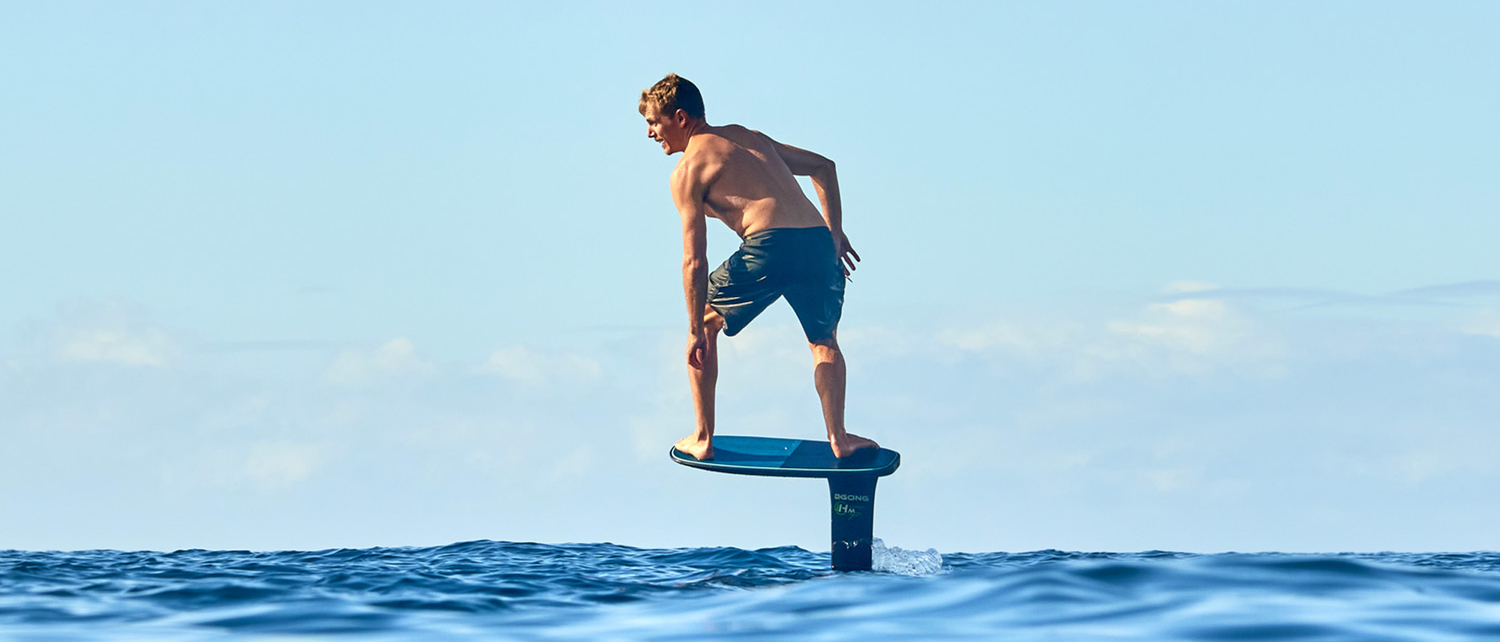Kategorie: Appletree Skipper Midlength
Appletree Midlength
für Wing- / Downwind- / Wave- / Surf- / Prone- Foiling
Fürs Wing Foilen verstehe es als ein Lower Wind-Range Extender, oder kleiner oder größerer Performance Foil Enabler.
Was wir nicht erwartet haben war wie gut sich das Board bei hohen Windgeschwindigkeiten weiterhin reiten lässt. Da es schmal ist, schneided es den Wind gut. Seine geringe Breite und sein Rocker im Tail, obwohl ein längeres Board, führt dazu, dass es nicht so schnell zu catchen beginnt wie wir erwarten würden.
Fürs Foil Driven (foil assist), macht ihn die Zapple Genetic zum absoluten Gewinner: Bist du also nicht allein ein auf Foil Drive spezialisiertes Trench Board (Zapple) aus ist das Midlength ohne Mulde zweifellos das Board aus der Range für assistiertes Wellenreiten.
Unsere Signal Tests verliefen sehr positiv, wir brauchten keine externe Antenne, ja nicht einmal den Schaum in den Tracks die das Wasser verdrängen.
FOILING MAGAZIN schreibt über Appletree Midlength Boards
With their own factory in Portugal, Appletree can be agile when it
comes to responding to market trends. Mid-length fever hit us last
year, and whilst the Appleslice V3 was certainly 80% of the way, a
more extreme and slender shape was already in development. Bal-
ancing a mid-length’s attributes to make it as versatile as possible
is a challenge, and we’ve seen some brands perhaps bias one disci-
pline more than others, but Appletree’s massive size range caters for
everyone, with seven sizes from 37l to 97l in 10 liter increments. Cus-
toms are of course available in terms of both color and sizing. Lengths
range from 5’0” to 6’8” in the bigger sizes. Our test board was an 87l
6’4 which has been perfect for lightwind frolicking in the UK.
Due to the explosion in demand for Foil Drive boards, the Zapple was
released earlier than the Skipper Midlength, but logically you will see
a very similar board without the trench. Design wise, we’ve got a slen-
der shape with some extra length per volume. Sharp lower rails and
long clean lines maximize its planing area, with a forward foil box po-
sition and elongated track box. Its design influence is drawn from oth-
er displacement hull sports – think kayak and canoes or performance
SUPs – this means it’s as efficient as possible through the water. These
attributes combine to make a board that planes, builds speed and
activates the foil extremely quickly, meaning less action and less flap-
ping. There’s a little kick of tail rocker which definitely helps release.
Y-oriented strap inserts are present to keep the masses happy, but
on this style of board I find myself changing my stance regularly to
maximize efficiency in different situations, but for those that like the
feeling of assurance or want to jump, they are there if required.
Build is to the usual extremely high standard with closed-cell water-
proof foam and a vacuum-infusion technique employed. This year
they’ve beefed up the noses and decks of the board even further to
help avoid elbow dents or if you manage to smash your boom into it.
This also stiffens what was already a very rigid board and translates
the foil feeling more, which we assumed wouldn’t be possible.
In the pursuit of parawing, the Midlength was great for more powered
sessions stepping down from full flotation, where an early as possible
release is extremely important. It made for easier cornering and better
angles upwind, due to the reduction in drag from the bigger board. With
the more positive pull of a K-Wing it works extremely well and made the
wave-riding experience far more playful.
For a non-committal prone rider like myself, the Midlength in a generous
volume was quite a revelation. It paddles quick and the rocker fits well
into smaller waves for extremely easy takeoffs. Pumping it was where it
really shone, as it’s so stiff for a big board; very little energy is lost and we
could wobble off for as long as our lung capacity could handle.
Winging the 87l Midlength alongside the 80l Appleslice V3 was an in-
teresting experiment.
The Slice has a little more roll stability due to its
width so is less of a handful on the surface, but the Midlength definitely
takes off significantly earlier, enabling you to be on a smaller foil or use
less wind in equivalent volumes. If you’re a more novice rider in choppy
conditions take the Slice all day long, but a more advanced rider could
easily take a Midlength into more consequential conditions and rougher
sea states, and benefit from the improved low-end to get them on a
smaller foil.
What sets the Appletree apart for the consumer is the stiff
build, the highly efficient release, and the massive range of sensible di-
mensions.
It’s also stiff, very stiff in fact, and for a larger board doesn’t
feel cumbersome as a result. Mix into that the higher sustainability cre-
dentials and longevity of the product and it’s a benchmark in cross-disci-
pline versatility. Size it right and the Midlength is a travel board you can
take into a plethora of situations.
-

 Aktuell im Angebot
Aktuell im AngebotNEW Appletree Zapple :: Foil Drive Board
Normaler Preis Von €1.569,00Normaler Preis€1.849,00Verkaufspreis Von €1.569,00Aktuell im Angebot -

 Aktuell im Angebot
Aktuell im AngebotAppletree Skipper Midlength Board
Normaler Preis Von €1.299,00Normaler Preis€1.699,00Verkaufspreis Von €1.299,00Aktuell im Angebot





